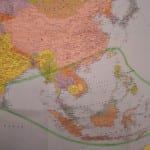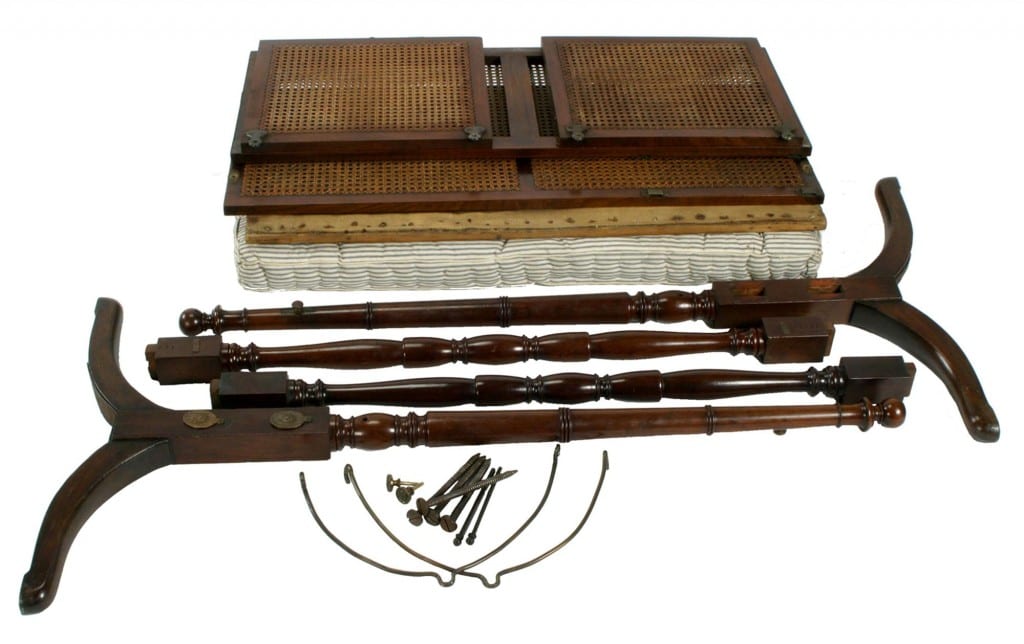 Caned Furniture
Caned Furniture
By Dr. Brian Crossley
Please note that this case study was first published on blogs.ucl.ac.uk/eicah in February 2014. The case study was last checked by the project team on 19 August 2014. For citation advice, visit ‘Using the website’.
This case study seeks to focus on one particular Asian material, rattan, and its relationship to changes in furniture design and production skills. In doing so, it highlights the ways in which one commodity (which was initially treated as a waste product) can illuminate our understanding of the multiple links that existed between the material worlds of Asia, America and Europe from the seventeenth to the nineteenth century.
The author, Brian Crossley, is a retired Chartered Civil Engineer and a second generation chair caner. His mother (who commenced chair caning as a ten year old in 1918) taught him the craft skills on two Victorian chairs shortly after his marriage in 1958, which helped to furnish his first home. She then guided him to a thorough understanding of the craft and he has subsequently and continuously re-caned all types of furniture for many and varied clients. He has taught others for a number of years and undertakes research into the world-wide development of this type of furniture. At various times living and working in the Middle East, managing a Department for International Development project in Bangladesh and travelling to Asia on business, he has been afforded opportunities to examine and study at first hand the materials and craft of chair caning. He is a Yeoman Member of the Worshipful Company of Basketmakers.
The first caned furniture appeared in England around 1660, but its route to London is the subject of much speculation. Certainly, from the mid-fifteenth century onwards the Portuguese traded in all those areas of the Asia where the raw material grows and was used, but their prime objective was to obtain high value pepper and other spices. One theory is that Catherine de Braganza from Portugal brought caned furniture with her to London when she married Charles II in 1661, but there is no evidence for this. John Evelyn’s diary mentions her bringing lacquered furniture but not caned furniture, or ‘cane furniture’ as it was then described. Customs records do not help and, whilst they later record the export of caned chairs made in England, there is no reference to importation of this type of chair.[1]
However, it is as a direct result of trading in South East Asia that caned furniture became very fashionable in England in the 1660s and possibly earlier.[2] Virtually all caned furniture is evident as chairs, although a very small amount of other caned furniture items has been produced. This case study focusses upon the use of cane in making chairs.
Material exchange
The material used to weave caned panels in furniture is commonly known as ‘cane’ and is from the Rattan Palm Tree which grows in the rainforests of Malaysia, Indonesia, Borneo and small areas of China, India and Sri Lanka. This section explores how this material came to be a global good.
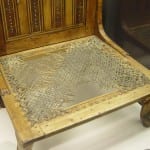 Design encounters
Design encounters
Global routes of trade and exchange, circulated design ideas alongside materials. This section explores the ways in which design knowledge moved between Asia, Africa and Europe, and the changing forms such movements engendered.
 Skills Transmission/New Skills
Skills Transmission/New Skills
Between the seventeenth and twentieth centuries, caned furniture underwent multiple changes. This section examines the different techniques and skills, which allowed for such changes to take place. It reveals caned furniture as highly adaptable, used in different places and climates in different ways.
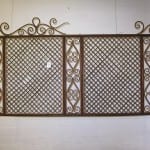 Other uses of rattan
Other uses of rattan
Users have always put rattan to different uses. From umbrellas and crinoline hoops to sewer rods and broom handles, rattan is a useful material to possess in many different situations. This section explores those other uses.
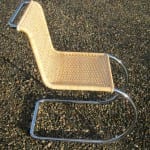 Conclusion
Conclusion
Virtually no caned chairs are now being made because the material is currently out of fashion. What might the future hold for rattan?
To view this case study in PDF format, click here.
Acknowledgments
The text and research for this case study was primarily authored by Brian Crossley.
[1]Maria Conceição Borges de Sousa, Portuguese Furniture: collection guide (Museu Nacional De Arte Antiga, 2000), p. 30. ‘It [canework] was part of the furniture taken in the Queen’s trousseau to England and was quickly accepted in English fashion’. Subsequent discussion with the author seeking the source of this statement indicated that this was recorded in John Evelyn’s Diary, but examination of the diary does not mention caned furniture.
[2] David Dewing, ‘Cane Chairs in London 1670 -1730’, Regional Furniture Society, 12 (2008), p. 54.
